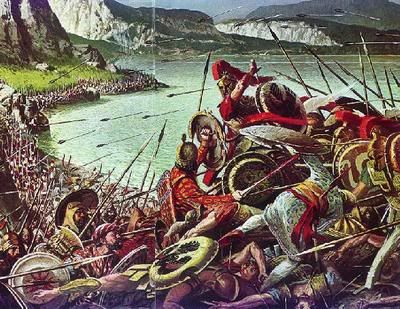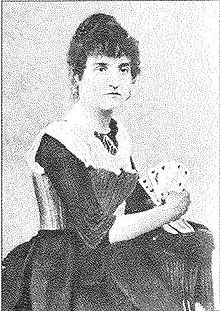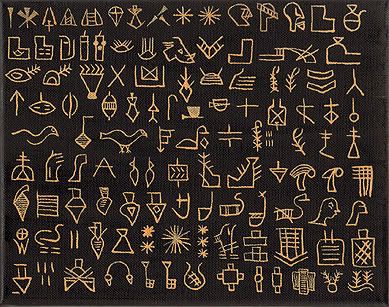 I don’t just review any movie. I try to stay somewhat on
topic here, with either a cultural or spiritual tie-in. The Spartans had some strong
similarities with the Langobards. Both were societies which were based on war
and the warrior ethic… “Warrior Socities.” In both societies, boys were trained
for war from an early age.
I don’t just review any movie. I try to stay somewhat on
topic here, with either a cultural or spiritual tie-in. The Spartans had some strong
similarities with the Langobards. Both were societies which were based on war
and the warrior ethic… “Warrior Socities.” In both societies, boys were trained
for war from an early age.
One difference is that the Langobards didn’t use “eugenics,”
although it’s probably safe to say that the greatest Langobard warriors probably
had more children than most. The Winnili/Langobards had no problem with “odds.”
Their kill/loss ratio was staggering, and possibly unequaled in history. The better-known Spartans, however, produced the greatest single known battle effort in the history of warfare.
The movie was about the Battle of Thermopylae in 480 BC,
where Spartan King Leonidas leading 300 Spartans against what was described as
a Persian imperial army of millions. Although
exaggerated, the odds were in fact incredible. The battle has been described by
some as “saving Western civilization,” which may cloud the harder reality that
it certainly was part of saving Greek civilization at that time. The movie
portrayed other items which were not accurate, of which I will avoid. Most of
which are more-or-less obvious.
This battle was just a part of the “Greco-Persian Wars”(499-449 BC). YouTube has documentaries galore about these wars and the Battle
of Thermopylae. It could also be noted that, along with the Langobard
comparison, there is a clear comparison to the Samurai. The Samurai were
another example of a “Warrior Society,” with similar traits to the Spartans.
One trait that the Spartans and Samurai had in common was that they seemed to
literally wish to die in the glory of battle. They actually would seek it, if
the historical accounts are true. The Spartans at Thermopylae at least, must
have had absolutely no fear of death.
A Greek force of approximately 7,000 men marched north to
block the pass in the summer of 480 BC. The Persian army, alleged by the
ancient sources to have numbered over one million but today considered to have
been much smaller (various figures are given by scholars ranging between about
100,000 and 150,000), arrived at the pass in late August or early
September. The vastly outnumbered Greeks held off the Persians for seven days
(including three of battle) before the rear-guard was annihilated in one of
history's most famous last stands.
During two full days of battle the small
force led by Leonidas blocked the only road by which the massive Persian army
could pass. After the second day of battle a local resident named Ephialtes
betrayed the Greeks by revealing a small path that led behind the Greek lines.
Leonidas, aware that his force was being outflanked, dismissed the bulk of the
Greek army and remained to guard the rear with 300 Spartans, 700 Thespians, 400
Thebans and perhaps a few hundred others, most of whom were killed.
300 is a 2007 American fantasy action film based on the
1998 comic series of the same name by Frank Miller and Lynn Varley. Both are
fictionalized retellings of the Battle of Thermopylae within the Persian Wars.
The film was directed by Zack Snyder, while Miller served as executive producer
and consultant. It was filmed mostly with a super-imposition chroma key
technique, to help replicate the imagery of the original comic book.
The plot revolves around King Leonidas (Gerard Butler),
who leads 300 Spartans into battle against the Persian "god-King"
Xerxes (Rodrigo Santoro) and his invading army of more than 300,000 soldiers.
As the battle rages, Queen Gorgo (Lena Headey) attempts to rally support in
Sparta for her husband. The story is framed by a voice-over narrative by the
Spartan soldier Dilios (David Wenham). Through this narrative technique,
various fantastical creatures are introduced, placing 300 within the genre of
historical fantasy.
 |
| Queen Gorgo |
The film has a certain cinematic quality that is
difficult to describe, but it’s as though one is watching it through a dark
fuzzy lens, into historical abyss. The Persian armies must have had segments
which were not ethnic Persians, who were from other territories of the Persian
Empire.. but that point was however much exaggerated in the film. The film
starts out making it very clear how Spartan boys were raised to be fighting
machines. R. Lee Ermey couldn’t have done a better job of creating killing
machines. They were trained to engage in pure evolutionary struggle, to ignore
pain, and were constantly tested to their limits. “Respect and Honor” was their
slogan, according to the movie; which reminded me of “Strength and Honor” from ‘Gladiator’.
King Leonidas was basically the main protagonist, along
with his wife Queen Gorgo. The two are engaged in a political conflict, not
only with the invading Persians, but with “bought-off traitors” within Spartan
politics. Another quote from the movie, I think from the narrator Dilios, the only
survivor of the 300, retelling the story: “Only the hard and strong may call
themselves Spartans.”
Before going to war, a Spartan King must go through a
religious rite in which he seeks guidance from the wise men of Greek polytheism. The movie portrays them as diseased and “monster-like”; which is
the only real item from the movie that I would criticize. I know some people
were not happy about what was a similar portrayal from the cable tv series ‘Vikings’,
in which the Odinic Skalds were shown to be hideous.
The only other Greek polytheist concept that I remember
from the film was was a scene which showed Persian ships sinking in a storm of
rain, thunder, and lightning before they could land. One of the Spartans
credited the Greek god Zeus for this happening. The opening battle was the most
dramatic scene, with the Spartans killing Persians soldiers (or Persian Emperor Xerxes' imperial troops) at will using amazing fighting skills and bravery. The historical record shows that they killed a
minimum of ten-to-one! It really could have been twenty-to-one.
Prior to I think the second battle, the narrator Dilios
says: “We do what we were trained to do, what we were bred to do, what we were
born to do.” Unlike some historical exaggerations, this quote was literally
accurate.
Slight spoiler alert beyond this point...
.
.
.
 |
| 'Battle of Thermopylae' |
After Leonidas and the 300 sacrificed their lives down to the last man, which
allowed for Sparta the time to gather themselves, the stage was set for the big
battle. An army of ten thousand Spartan warriors were lined up to do battle
with an army of thirty thousand Persians. The narrator Dilios, for the purpose
of the movie speaking in real time, gave a short speech to the army. He
finishes with the following: “Give thanks, men, to Leonidas and the brave 300!
TO VICTORY!”
When viewing it, I thought he said “Take Leonidas and the
brave 300 to victory!" Actually, that line would have worked too! Good movie.
.
 Flowers currently is the executive officer, or Yrmin Drighten, of the Rune-Gild. As a project of the Rune-Gild, Flowers founded the Ásatrú organization the Ring of Troth in 1987 (which is now simply called the Troth). Flowers is no longer affiliated with the Troth. Flowers has also had contact with the Armanen-Orden, the Order of the Triskelion and other occult orders.
Flowers currently is the executive officer, or Yrmin Drighten, of the Rune-Gild. As a project of the Rune-Gild, Flowers founded the Ásatrú organization the Ring of Troth in 1987 (which is now simply called the Troth). Flowers is no longer affiliated with the Troth. Flowers has also had contact with the Armanen-Orden, the Order of the Triskelion and other occult orders. According to Leland, in his book Etruscan Roman Remains, Maddalena was originally from the town of Rocca Casciano, which is now called Rocca San Casciano. It is located in the Province of Forli-Cesena in the Italian region of Emilia-Romagna. She reportedly traveled a great deal, making a living telling fortunes and selling charms. According to Leland, Maddalena claimed to have been trained in a family tradition of Italian Witchcraft, which was passed on to her by aunts and by her step-mother.
According to Leland, in his book Etruscan Roman Remains, Maddalena was originally from the town of Rocca Casciano, which is now called Rocca San Casciano. It is located in the Province of Forli-Cesena in the Italian region of Emilia-Romagna. She reportedly traveled a great deal, making a living telling fortunes and selling charms. According to Leland, Maddalena claimed to have been trained in a family tradition of Italian Witchcraft, which was passed on to her by aunts and by her step-mother. The tradition that Maddalena most likely practiced is reflected in Leland's books Etruscan Roman Remains, Legends of Florence, and Legends of Virgil. The portrayal of Witches and Witchcraft in Leland's Gospel of Aradia does not reflect the same image as his earlier works. This is another indication that the material came from a system outside of Maddalena's own knowledge and experience.
The tradition that Maddalena most likely practiced is reflected in Leland's books Etruscan Roman Remains, Legends of Florence, and Legends of Virgil. The portrayal of Witches and Witchcraft in Leland's Gospel of Aradia does not reflect the same image as his earlier works. This is another indication that the material came from a system outside of Maddalena's own knowledge and experience. Scholars of pre-Christian tradition must indeed be sympathetic and even empathetic to the paradigms they are studying. If they do not have a subjective link to the paradigm they are seeking to understand, then they have categorically placed an insurmountable barrier between themselves and the “object” they seek to understand. Hence they have in fact disqualified themselves from ever being able to really understand the patterns of thought in question.
Scholars of pre-Christian tradition must indeed be sympathetic and even empathetic to the paradigms they are studying. If they do not have a subjective link to the paradigm they are seeking to understand, then they have categorically placed an insurmountable barrier between themselves and the “object” they seek to understand. Hence they have in fact disqualified themselves from ever being able to really understand the patterns of thought in question. I don’t just review any movie. I try to stay somewhat on
topic here, with either a cultural or spiritual tie-in. The Spartans had some strong
similarities with the Langobards. Both were societies which were based on war
and the warrior ethic… “Warrior Socities.” In both societies, boys were trained
for war from an early age.
I don’t just review any movie. I try to stay somewhat on
topic here, with either a cultural or spiritual tie-in. The Spartans had some strong
similarities with the Langobards. Both were societies which were based on war
and the warrior ethic… “Warrior Socities.” In both societies, boys were trained
for war from an early age.







 Some "Slavic nationalist" types have taken this pretty far, as you may see here with their history of "Slavic script." I think this should be pondered, but it seem pretty clear that this civilization predated modern ethnic groups as we may know them today.
Some "Slavic nationalist" types have taken this pretty far, as you may see here with their history of "Slavic script." I think this should be pondered, but it seem pretty clear that this civilization predated modern ethnic groups as we may know them today.  There really shouldn't be "political implications" to ruins and artifacts. The "Aryans" were not Iranians, Indians, Germans, Scandinavians, Semites, or Slavs. They were the fusion of ancient Teutons from north of the Himalayals, who migrated south after the last glacial movement, and ancient true-Mediterraneans. There's almost a neuro-psychological fear of the world "Aryan," who were merely ancient Persians... and those who eventually migrated outward. Arkaim and its allied cities may have been a northern flank of the Aryan civilization. There may not be a single word in existence which makes so many people, so stupid, so quickly!
There really shouldn't be "political implications" to ruins and artifacts. The "Aryans" were not Iranians, Indians, Germans, Scandinavians, Semites, or Slavs. They were the fusion of ancient Teutons from north of the Himalayals, who migrated south after the last glacial movement, and ancient true-Mediterraneans. There's almost a neuro-psychological fear of the world "Aryan," who were merely ancient Persians... and those who eventually migrated outward. Arkaim and its allied cities may have been a northern flank of the Aryan civilization. There may not be a single word in existence which makes so many people, so stupid, so quickly!